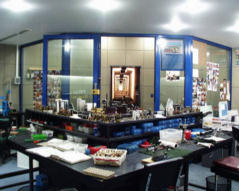

 The Accurate Reloading Forums
The Accurate Reloading Forums  THE ACCURATE RELOADING.COM FORUMS
THE ACCURATE RELOADING.COM FORUMS  Guns, Politics, Gunsmithing & Reloading
Guns, Politics, Gunsmithing & Reloading  Reloading
Reloading  Re: the belt on magnum cases
Re: the belt on magnum casesGo  | New  | Find  | Notify  | Tools  | Reply  |  |
| one of us |
Unreliability of magazine feeding of rimmed rounds may also be a message from marketers. WWII vintage 303 (which has a significant flange) rifles and Bren guns were used for several weeks in each of my five years at secondary school cadet training and I didn't see a single jam at the range nor hear of one. | ||
|
| one of us |
Rupert, those were my thoughts as I read the article and considered the implications. But hey, what do I know   | |||
|
| one of us |
Just my $0.02. Military arms, like the SMLE, were able to utilize rimmed cases because they used a wedge-shaped magazine, that would properly index the rim (top cartridge ahead of the one underneath) and they were virtually all single-stack. The only exception I can think of is the Krag, and they used an entirely different method of dealing with it, but it was still addressed. They also didn't care WHAT it looked like, as long as it worked! The belted magnums, as previously stated, were used in rounds that had long sloping shoulders, or virtually no shoulders, as would be the case in those with bores .450" & larger. The makers were building bolt-action rifles that were taking the place of the large-bore double rifles, which almost exclusively used rimmed (flanged) cases. We are also switching from black powder to cordite, semi-smokeless, and smokeless powders. They were also building rifles for a clientele that appreciated fine worksmanship, at a time when labor was cheap. Much hand work went into these rifles, and they were built to be admired as much as, if not more than, used. Neither the maker, nor the customer, wanted an ugly rifle, with that military-looking magazine sticking out the bottom! Also, where feasible, a staggered, or semi-staggered magazine would add a round or two to the magazine capacity. In a dangerous game scenario, I imagine three or four rounds would sound much superior to two, even if it wasn't actually the case, in the field. I'll quit, now. Feel free to correct me if I haven't got this sorted out in my head right...............Bug. | |||
|
| one of us |
Hey Dan - We COULD headspace off of the bolt face by haveing the bolt grasp the round firmly from points 120 degrees apart. See my post today up in Gunsmithing. All we need is enough case retention to stand up to the pin strike and then to provide extraction. This retention of the case head would initiate with the extractor gripping the extractor groove, just as it is now, but then two other retainers would impinge as the bolt face enters the chamber. My view is that if you have the case head squared up on the bolt face and held firmly, you are in as good a position as you would be with a belt. Heck, people fireform headspacing off of the bullet contact with the lands!! | |||
|
Moderator |
Quote: It is very exspensive to create tooling for a unique brass cases, ie different dia and head configuration. Therefore, when the US makers desired to use a larger capacity case for the various magnums that came out in the 50's and 60's, the 300/375 H&H case was the logical choice. The only one of those rounds that required the belt to headspace was the 458 win mag. In essence the belt is only there because it would be very exspensive to remove it, it serves no purpose per se for those rounds. The only reason to headspace on the shoulder is most factory magnums have sloppy chambers and excessive headspace on the belt, not to mention the large variance in belt dimensions from various brass makers. John Ricks has done some excellent write ups in this forum on the issue, and a search of this forum would be well worth while. With a properly cut chamber, and brass matched to that chamber, there is no need to headspace on the shoulder. | |||
|
| Powered by Social Strata |
| Please Wait. Your request is being processed... |
|
 The Accurate Reloading Forums
The Accurate Reloading Forums  THE ACCURATE RELOADING.COM FORUMS
THE ACCURATE RELOADING.COM FORUMS  Guns, Politics, Gunsmithing & Reloading
Guns, Politics, Gunsmithing & Reloading  Reloading
Reloading  Re: the belt on magnum cases
Re: the belt on magnum cases

Visit our on-line store for AR Memorabilia

